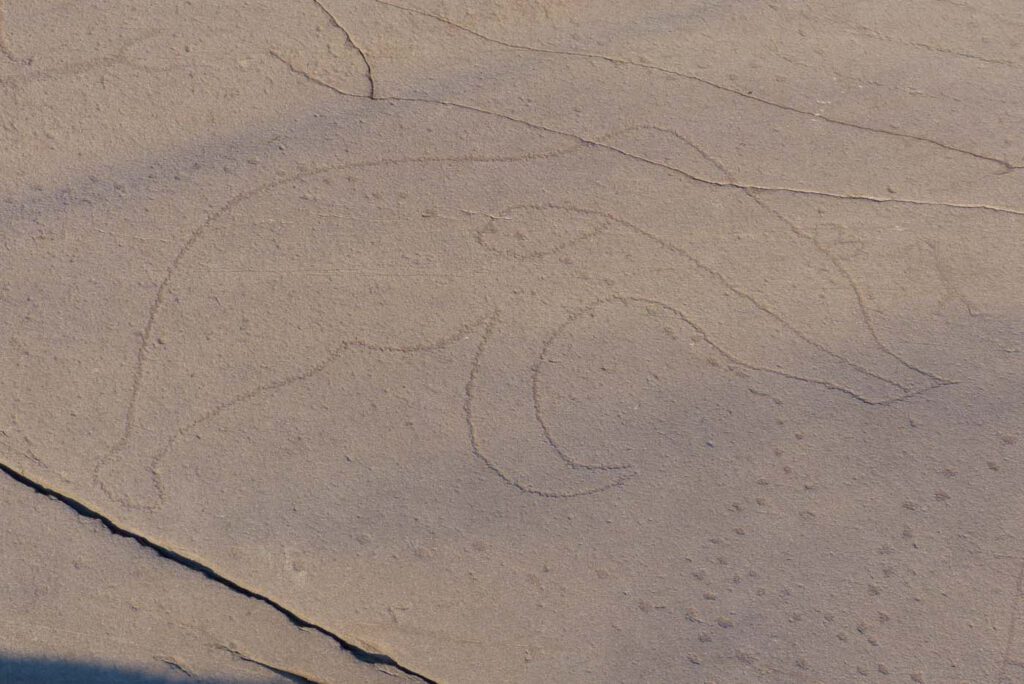Drawing of rock carving of an elk with numerous anatomical parts depicted

Drawing of rock carving of an elk with numerous anatomical parts depicted. Åskollen in southern Norway. From: Rock Art and the Wild Mind. Visual Imagery in Mesolithic Northern Europe. Ingrid Fuglestvedt, Copyright © 2018, London, Routledge. Figure 5.2, page 192. Reproduced by permission of Taylor & Francis Group. – A few rock carvings in southern […]
Rock carving of reindeer with intestines

Rock carving of reindeer with intestines. Alta, northern Norway. Photo: Karin Tansem, VAM, Copyright © World Heritage Rock Art Centre – Alta Museum (CC BY-NC-SA 4.0) – The large antlers indicate that this is a reindeer bull. The vertical lines in the front part of the torso may represent the ribs and the complex set of lines […]
Rock carving of elk with lifeline and guts

Rock carving of elk with lifeline and guts. Alta, northern Norway. Photo: Karin Tansem, VAM, Copyright © World Heritage Rock Art Centre – Alta Museum. (CC BY-NC-SA 4.0) – Only a few of the rock art images in northern Norway display a patterning that is likely to represent guts in an unambiguous way. This male elk is […]
Slate knife with two porpoises engraved

Slate knife with two porpoises engraved. Found at Teksdal, central Norway. Photo: Per E. Fredriksen, NTNU University Museum CC BY-NC-SA 4.0 – This single-edged knife of reddish-brown slate, or sandstone bears three engravings of fish or porpoises, two on one side (shown here) and one on the back. All three display the same internal patterning, a […]
Rock carving of Brown bear with lifeline

Rock carving of Brown bear with lifeline. Alta, northern Norway. Photo: Charlotte Damm – This bear, a large, more than one metre long figure, is portrayed through the outline of the animal’s profile only. The only other visible feature is a line running from the snout to an oblong circle located in the front part […]
